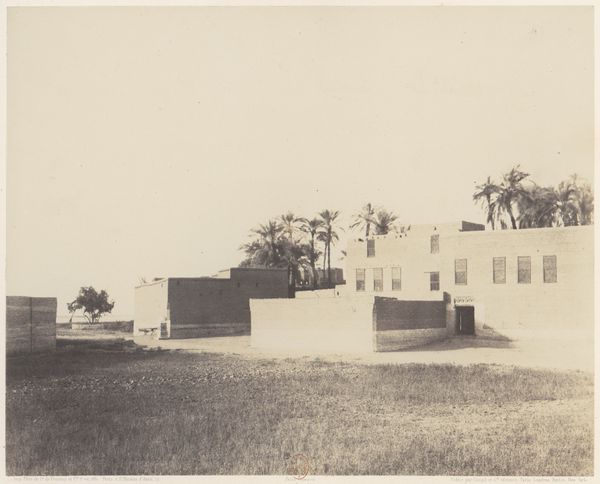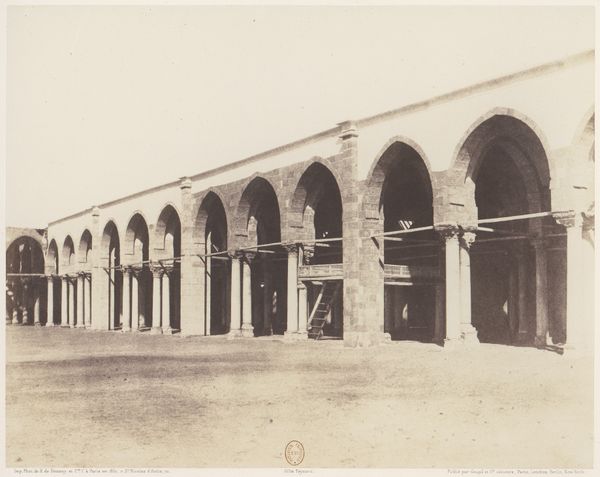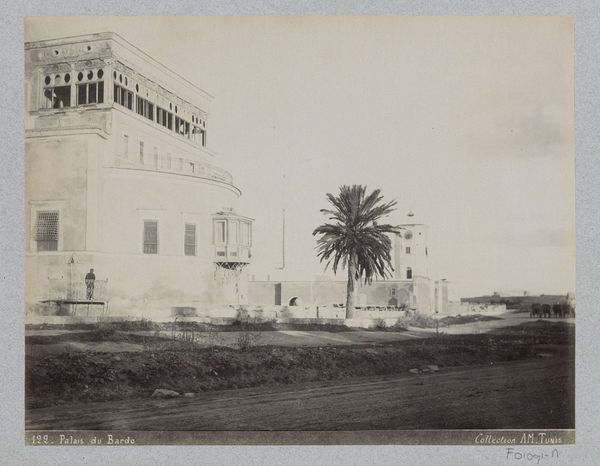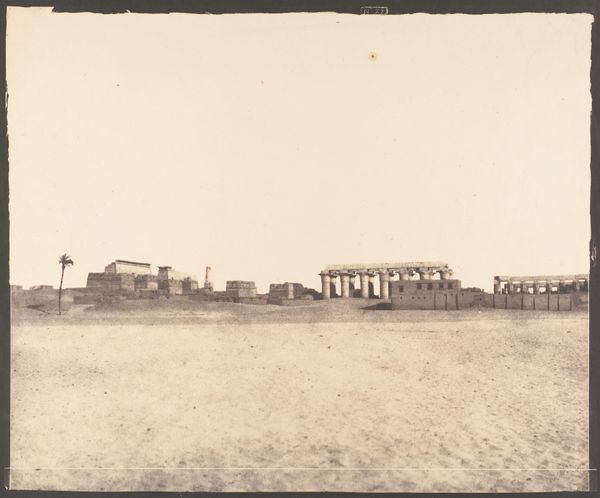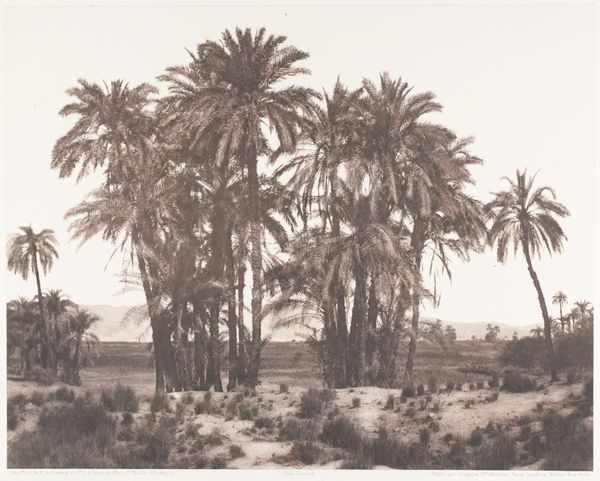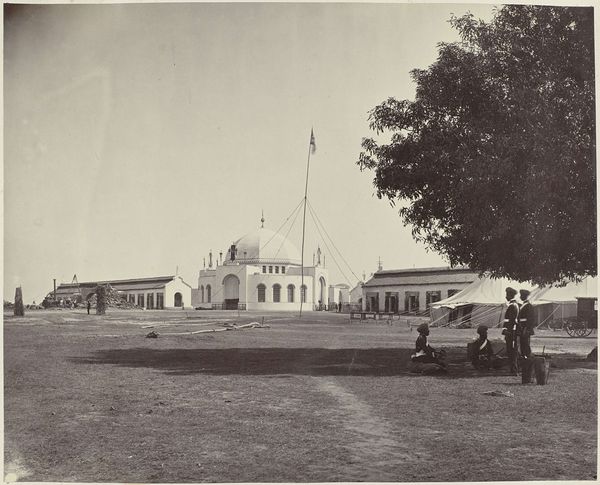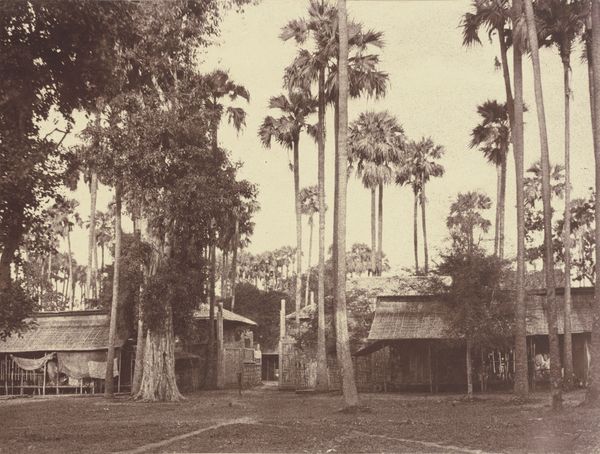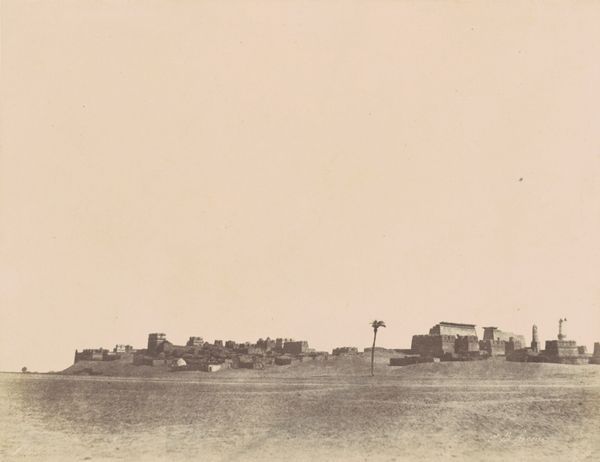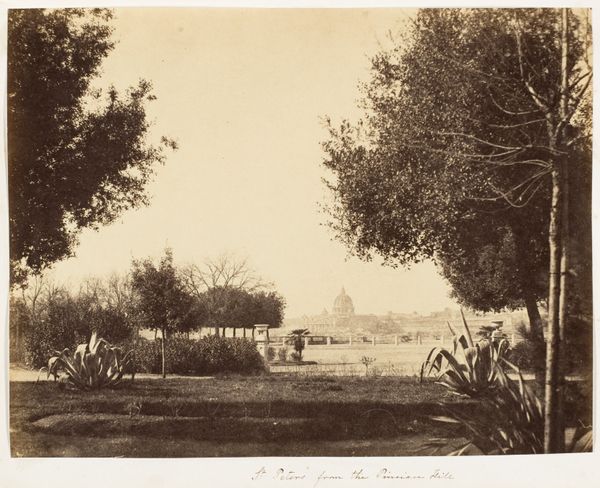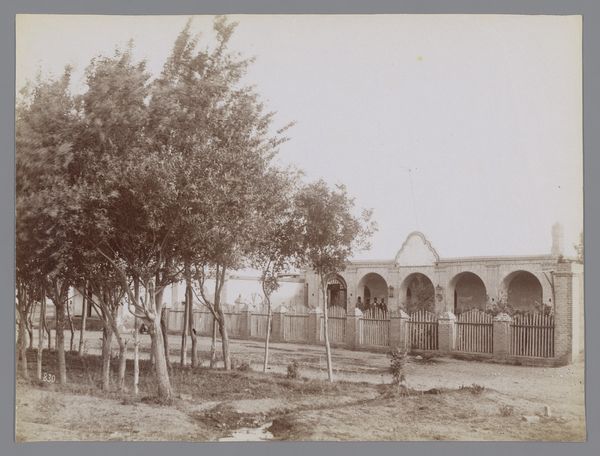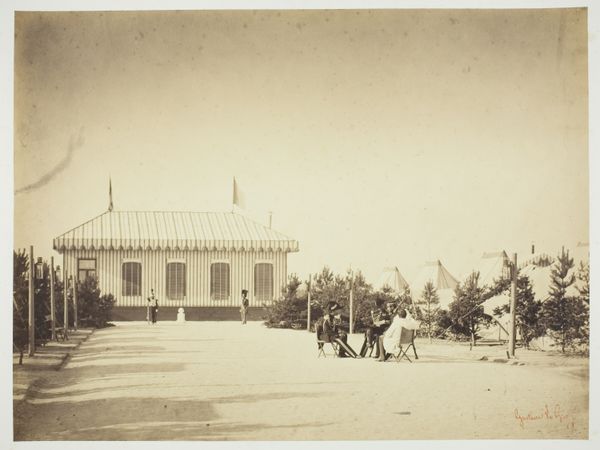
Syout, Constructions Modernes - le Divan, etc. 1851 - 1852
0:00
0:00
daguerreotype, photography, architecture
#
landscape
#
daguerreotype
#
photography
#
ancient-mediterranean
#
orientalism
#
cityscape
#
architecture
Dimensions: 23.7 x 29.8 cm. (9 5/16 x 11 3/4 in.)
Copyright: Public Domain
Curator: This is Félix Teynard's "Syout, Constructions Modernes - le Divan, etc.", a daguerreotype from around 1851-1852, currently residing at the Metropolitan Museum. It offers a captivating glimpse into 19th-century Egypt. Editor: The hazy atmosphere immediately strikes me. The light almost washes everything out, creating a slightly dreamlike, almost surreal effect. It mutes the buildings in the distance. Curator: Absolutely. Teynard's meticulous technique is vital. The daguerreotype process, involving silver-plated copper, demanded incredibly long exposure times, essentially freezing a moment. The resulting detail in the architecture speaks volumes about 19th-century building materials and methods in Egypt. Editor: And what about the visual language here? The composition feels almost like a stage set, with the low horizon line emphasizing the built environment. Those minarets, those seemingly fortress-like walls…they feel both imposing and vulnerable, weighed down with history. Notice the geometric repetition in the architecture - an emphasis on order. Curator: I'm drawn to how the stark white buildings contrast against the dark, seemingly untamed field. It's a clash between imposed structure and the natural landscape that provides the materials for its construction. We have to remember that the rise of photography was intricately linked to colonial projects. This image, therefore, isn't simply a document but a mediated representation. Editor: Exactly. The minaret is obviously an important visual marker – religious identity presented via architecture – but the composition invites consideration. Teynard's placing it in the backdrop among palm trees gives an orientalist context, as a romantic exoticizing view. Curator: It's a fascinating consideration. I see a confluence of technical innovation and the economic underpinnings that made such expeditions possible, leading to unique representations of a landscape shaped by specific labour. The image functions both as record and a tool. Editor: And I see it as a cultural touchstone, a fragile image carrying so much meaning. A moment captured forever and yet filtered through Teynard’s eye. Curator: Seeing it from this material perspective provides clarity on not just what it pictures, but why and how such objects were conceived in the first place. Editor: Indeed. Thinking about how those lasting impressions continue to ripple through how we imagine place and belief gives such photography deeper value.
Comments
No comments
Be the first to comment and join the conversation on the ultimate creative platform.
